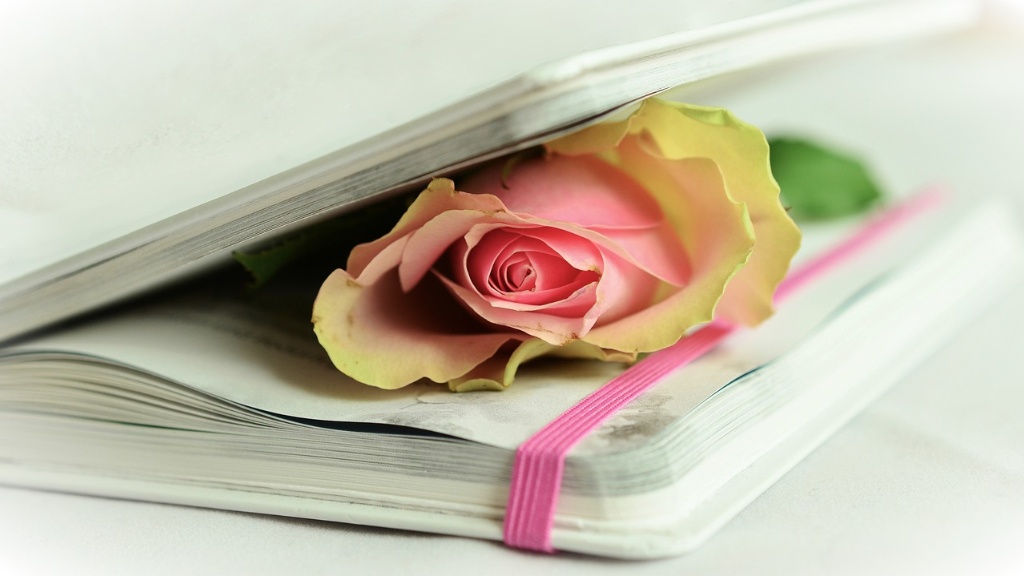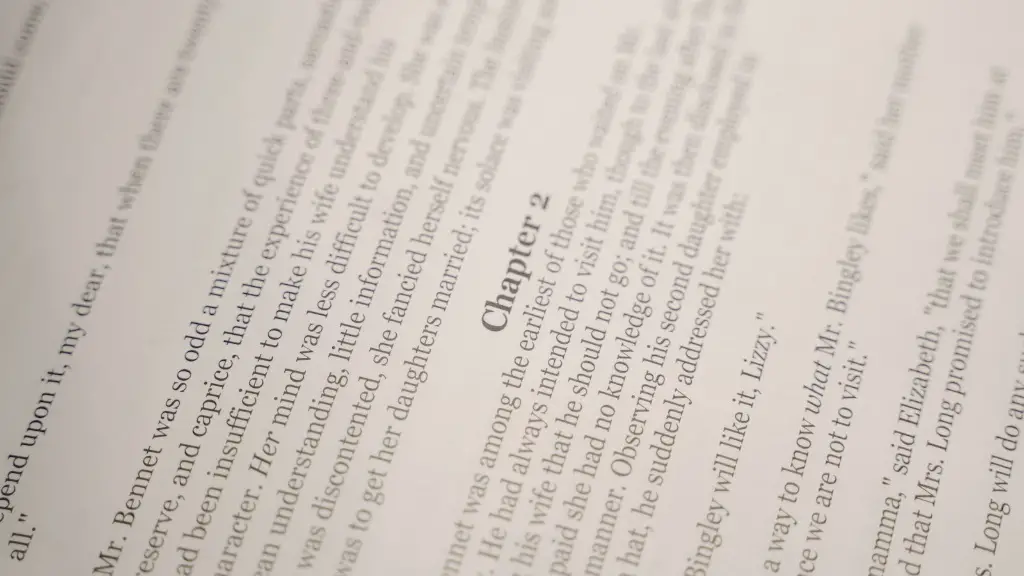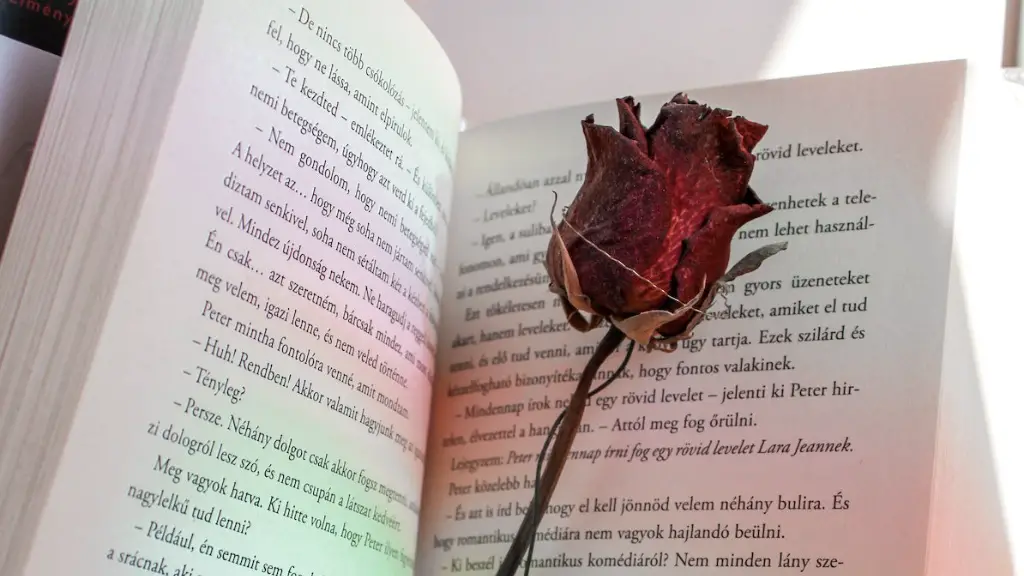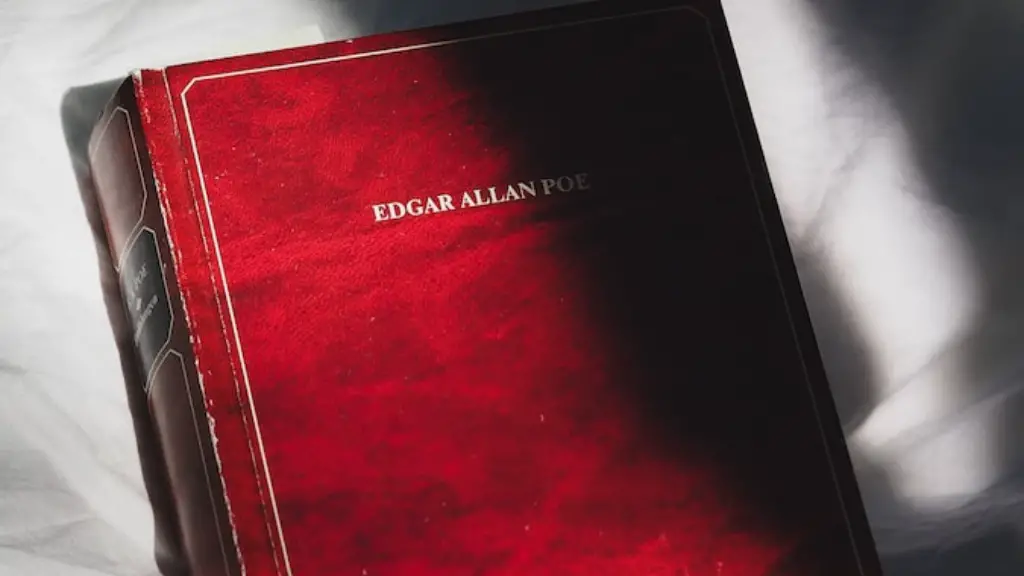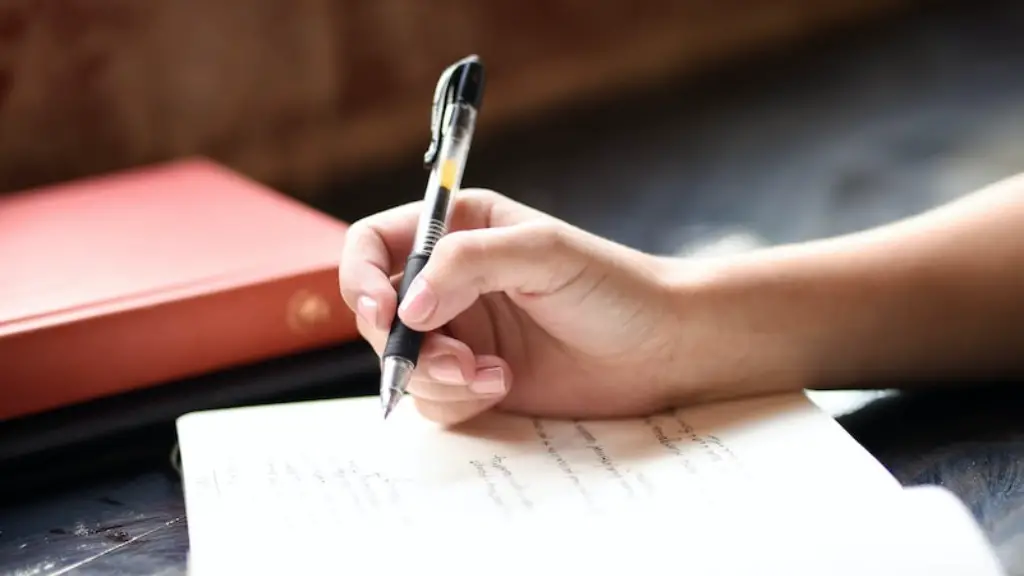When it comes to writing poetry, it is important to know about sound devices. Sound devices are elements of poetry that use the sounds of words, such as rhythm, alliteration, assonance and consonance, to create a feeling of rhythm and expressiveness in writing. These elements of poetry have been used for centuries to give a poem its distinctive sound and feel.
One of the most important aspects of sound devices is the use of rhythm. Rhythm is the repetition of a sound or pattern within a poem. For example, a poem may have a series of words that are repeated with a certain pattern. This pattern can be used to create a feeling of cadence and cadence can influence the mood of a poem. Rhythm can also be used to help the reader understand the poem and the poet’s intentions in writing it.
Alliteration is another sound device used by poets. Alliteration is the repetition of a certain sound, usually a consonant, at the beginning of two or more words in a line or sentences. It is a form of repetition, which can create a feeling of rhythm and emphasize certain words. This element of poetry helps to create a memorable phrase that can stand out in the poem.
Assonance and consonance are two other sound devices that can be used in poetry. Assonance is the repetition of vowel sounds, while consonance is the repetition of consonant sounds. Examples of assonance in poetry are the soft, low sounds of vowels like a, e, and u. Consonance can be used to emphasize certain words and create a sense of drama and tension.
Most poets use sound devices to create a certain mood in their poetry. Sound devices can be used to emphasize certain words, evoke strong emotions, or create a memorable phrase or sound. Poets can use sound devices to help create a mood in their writing, and to create an atmosphere of understanding and appreciation in their readers.
Using sound devices correctly can help to create a unique and memorable poem. It is important for poets to be aware of the different sound devices used in poetry, as each sound device creates a different effect. These sound devices can help to emphasize words, create a specific tone or mood, or evoke certain emotions in a poem. Ultimately, the correct use of sound devices will make a poem stand out and be remembered.
Rhythm
Rhythm is a sound device used by poets to create a feeling of cadence and emphasize certain words. By repeating a certain sequence of sounds, poets can give a poem its distinctive sound and feel. Rhythm can also be used to help the reader understand the poem and the poet’s intentions in writing it. In many poems, the poet will use a specific metre or rhyme to add rhythm to the poem. For example, in the poem “The Road Not Taken” by Robert Frost, the poet uses iambic tetrameter, repeating the pattern “da-DUM da-DUM da-DUM da-DUM” in each line of the poem. Through the use of meter and rhyme, the poet is able to convey a clear meaning and evoke emotion in the reader.
Rhythm can also influence the mood of a poem. By using a certain tempo of sound, the poet can suggest a particular emotion or feeling in the reader. For example, a slower, longer rhythm can create a feeling of sadness or mourning, while a faster, shorter rhythm can suggest excitement or joy. By understanding the effects of rhythm, poets can use it to create the desired mood in their poem.
The use of rhythm is an important aspect of any poem. By understanding the different sound devices used in poetry, poets can create a memorable poem that conveys a clear message and emotion to the reader.
Alliteration
Alliteration is the repetition of a certain sound, usually a consonant, at the beginning of two or more words in a line or sentences. It is a form of repetition, and it can be used to help create a feeling of rhythm, emphasis certain words, and evoke a certain emotion. Alliteration can be used to bring attention to an important word in the poem or to create a sense of balance. For example, in the poem “The Raven” by Edgar Allan Poe, the poet uses the alliterative phrase “For the rare and radiant maiden” to evoke a sense of beauty and admiration in the reader.
The use of alliteration can also create a feeling of familiarity in a poem. By repeating the same sound, the poet can create a catchy phrase that is easy to remember. Alliteration can also be used to create a connection between words that otherwise may not have any relation to one another. For example, in the poem “Hope is the Thing with Feathers” by Emily Dickinson, the poet uses the alliterative phrase “that perches in the soul” to creating a connection between the two otherwise unrelated elements of “hope” and “feathers”.
By understanding how alliteration can be used in poetry, poets can create memorable phrases and evoke certain emotions in readers. Alliteration is an important sound device that can add depth and meaning to a poem.
Assonance and Consonance
Assonance and consonance are two other sound devices used by poets. Assonance is the repetition of vowel sounds, while consonance is the repetition of consonant sounds. Examples of assonance in poetry include the soft, low sounds of vowels such as a, e, and u, while an example of consonance is the repetition of “b” and “p”. Assonance and consonance can be used to emphasize certain words and add rhythm to a poem.
Assonance and consonance can also be used to create a feeling of unity between words in a poem. By repeating a certain sound in two or more words, the poet can create a connection between those words. This can help the reader to better understand the poem and the poet’s intentions. For example, in the poem “I Knew a Woman” by Theodore Roethke, the poet uses the assonant phrase “down by the beech-trees fringe” to create a connection between the two elements of “woman” and “trees”.
The use of assonance and consonance is an important tool for poets to create a feeling of rhythm, emphasis certain words, and create a connection between words in a poem. By understanding these sound devices, poets can create a unique and memorable poem.
Emotional Impact
Sound devices can also be used to create an emotional impact on the reader. By understanding the effects of rhythm, alliteration, assonance and consonance, poets can create a specific tone or mood in their poem. Poets can use sound devices to evoke certain emotions in their readers, such as joy, melancholy, strength, or despair. For example, in the poem “The Hound of Heaven” by Francis Thompson, the poet uses a combination of alliteration and assonance to evoke a feeling of despair and hopelessness in the reader.
Sound devices can also be used to suggest a particular mood. By using a certain tempo or sound, the poet can create a feeling of sadness or joy. For example, a slower, longer rhythm can suggest sadness, while a faster, shorter rhythm can suggest excitement or joy. By understanding how sound devices can be used to manipulate a reader’s emotions, poets can create powerful poems that convey a deep message.
The use of sound devices in poetry is an important tool for poets to create a unique and memorable poem. By understanding the different sound devices used in poetry, poets can create an atmosphere of understanding and appreciation in their readers.
Memorability
Using sound devices correctly can help to create a unique and memorable poem. By understanding the different effects of rhythm, alliteration, assonance and consonance, poets can use sound devices to emphasize certain words, create a specific tone or mood, or evoke certain emotions in a poem. This can help to make a poem stand out and be remembered.
In addition, sound devices can also be used to create a catchy phrase. By repeating a certain sound, the poet can create a memorable phrase that is easy to recall. Alliteration and assonance can be used to create a phrase that is easy to remember, and that can help to emphasize a certain theme or message in the poem. For example, in Robert Frost’s poem “The Road Not Taken”, the poet uses the alliterative phrase “Two roads diverged in a wood” to emphasize the theme of choice in the poem.
The use of sound devices is an important aspect of any poem. By understanding the different sound devices used in poetry, poets can create a memorable poem that conveys a clear message and emotion to the reader.
Importance
The use of sound devices is an essential tool for poets to create a unique and memorable poem. Poets can use sound devices to help convey their message, emphasize certain words, and evoke certain emotions in their readers. Understanding the effects of sound devices can also help poets create a distinct atmosphere and feeling in their poem. Ultimately, the correct use of sound devices will help to make a poem stand out and be remembered.
It is important for poets to be aware of the different sound devices used in poetry, as each sound device creates a different effect. Understanding the different effects of sound devices can help poets create a meaningful and memorable poem. Furthermore, sound devices can help to add depth and meaning to a poem, making it stand out among other poems.
The use of sound devices is an important aspect of writing poetry. By understanding the different effects of sound devices, poets can create a unique and memorable poem that conveys their message and evokes emotion in the reader.

